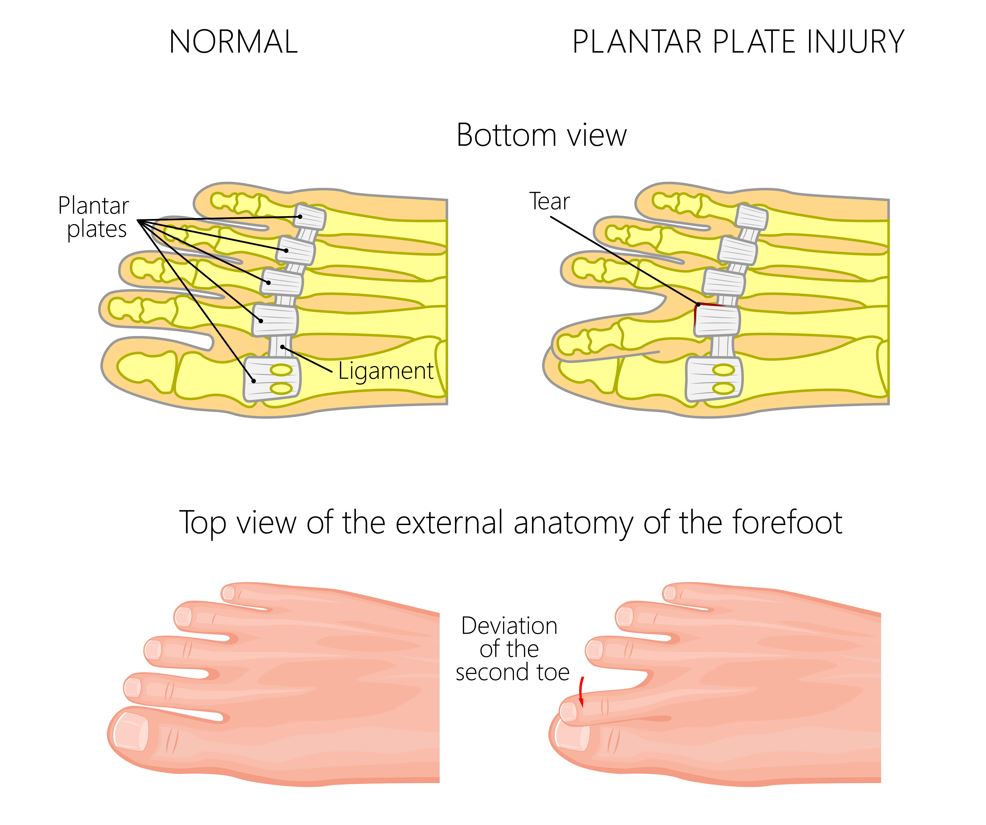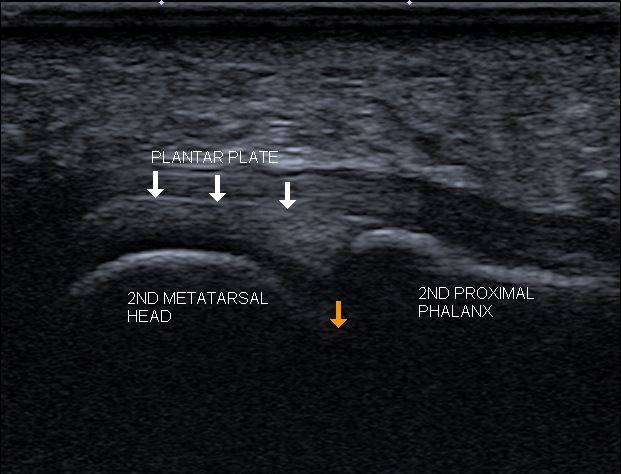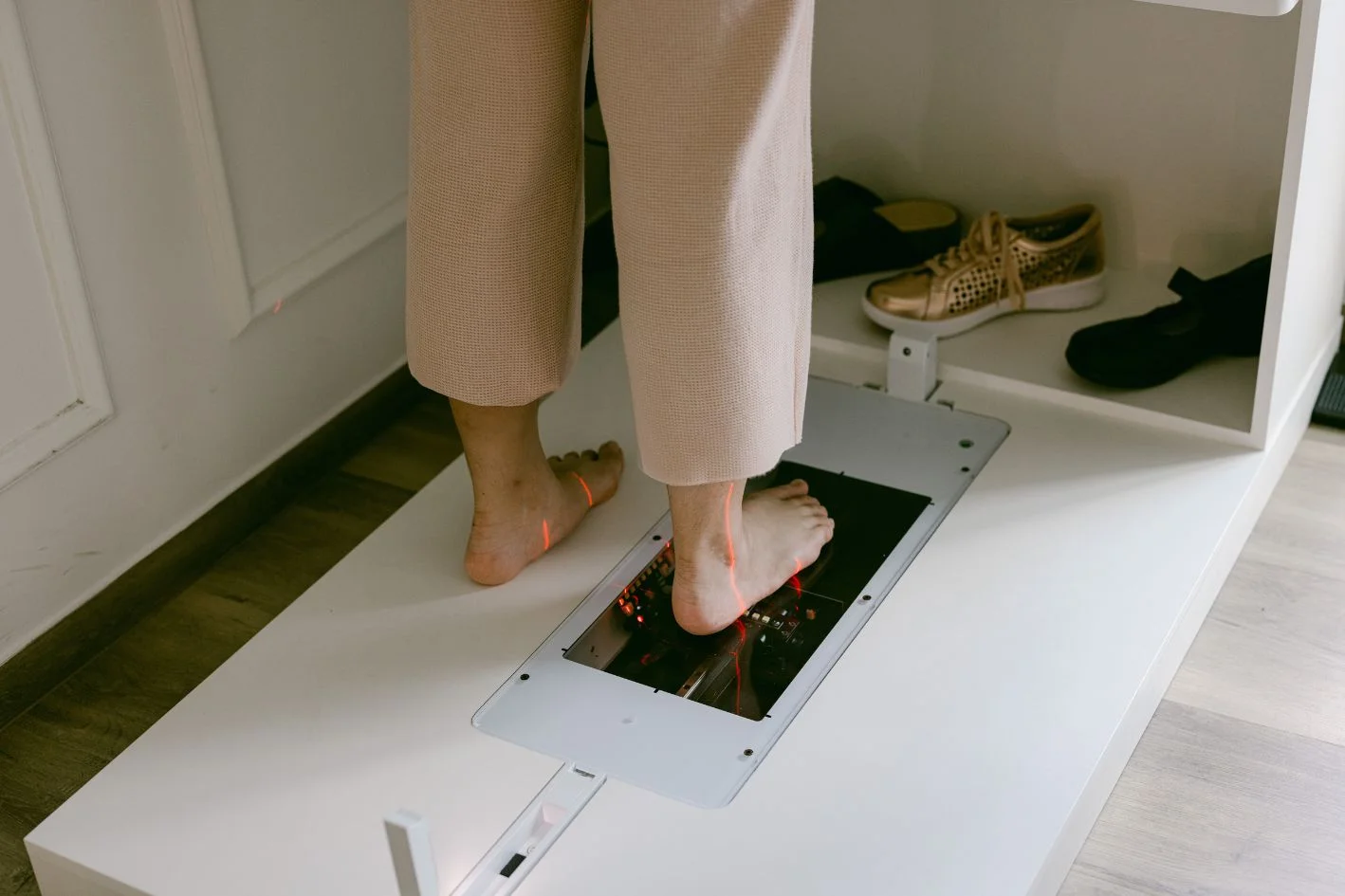At our podiatry clinic in Singapore, we understand how debilitating foot pain can be. One of the most common causes of foot pain is a Plantar Plate Tear or Plantar Plate Injury. Pain from the plantar plate is usually quite distinct as it normally feels like you are stepping on a pebble. In this article, we will discuss the causes, symptoms, diagnosis, and management options for this condition.
What is a Plantar Plate Tear?
The plantar plate is a ligament located under the ball of the foot, connecting the toes to the metatarsal bones. A tear occurs when this ligament is degenerated or suffered too much trauma, leading to pain and discomfort in the ball of the foot. This condition is common among athletes, especially those who engage in high-impact sports like running and jumping.

Causes of Plantar Plate Tear
There are several factors that can contribute to the development of this condition. Some of the most common causes are:
- Overuse: Engaging in repetitive high-impact activities can cause stress on the plantar plate, leading to tears over time.
- Foot Structure: People with high arches or flat feet are more prone to developing plantar plate injuries.
- Trauma: A direct injury to the ball of the foot, such as stubbing the toe, can cause the tear to occur
Symptoms of Plantar Plate Tear
The most common symptom is pain in the ball of the foot, especially when walking or standing. Patients will usually describe plantar plate pain as “stepping on a pebble”. Other symptoms may include:
- Swelling
- Redness
- Tenderness
- Stiffness
- Retracted toe (“floating toe”)
Plantar Plate Tear Diagnosis
A podiatrist can diagnose a plantar plate tear by performing a physical examination and taking a medical history. Imaging tests like diagnostic ultrasound and MRIs may also be used to confirm the diagnosis and determine the extent of the injury.

Treatment for plantar plate pain typically involves a combination of rest, physical therapy, and medication. In some cases, surgery may be necessary to repair the tear.
Treatment Options for Plantar Plate Tear
- Rest: Resting the foot and avoiding high-impact activities can help reduce pain and inflammation.
- Orthotics: Podiatrist-prescribed customised insoles can be designed to specifically take pressure off the affected toe joint and reduce pain
- Advanced Therapies: Management options such as shockwave therapy and magnetotransduction therapy can help to stimulate repair, and reduce pain and inflammation.
- Medication: Over-the-counter pain relievers like ibuprofen, though not recommended, can help reduce pain and inflammation.
- Surgery: If conservative treatments do not provide good relief, surgery may be necessary to repair the tear.
Conclusion
Plantar plate tears can be a painful and debilitating condition, but with proper diagnosis and management, patients can recover and return to their normal activities. If you are experiencing foot pain or suspect you may have a plantar plate injury, contact our podiatry clinic in Singapore today to schedule an appointment with one of our experienced podiatrists. Let us help you get back on your feet!

Jackie Tey
Chief Podiatrist, B.Pod(Hons). Your foot and lower limb specialist passionate about raising awareness for foot and lower limb health.








